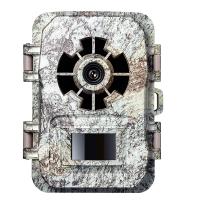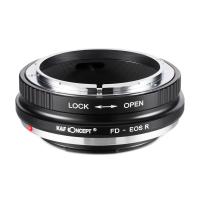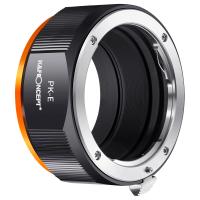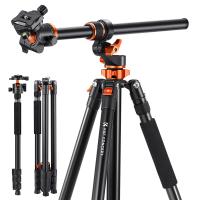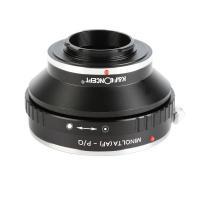When Was A Microscope Invented ?
The microscope was invented in the late 16th century, with the credit often given to Dutch spectacle maker Zacharias Janssen and his father Hans. However, there is some debate over the exact origins of the microscope, as there were other inventors around the same time who also developed similar devices. Regardless of who can claim credit for the invention, the microscope revolutionized the study of biology and medicine by allowing scientists to see and study tiny organisms and structures that were previously invisible to the naked eye.
1、 Early Microscopes (1590-1670)
The microscope is an essential tool in the field of science, allowing us to observe and study objects that are too small to be seen with the naked eye. The invention of the microscope is credited to two Dutch spectacle makers, Zacharias Janssen and his father Hans Janssen, in the late 16th century. They created the first compound microscope by placing two lenses in a tube, which allowed for magnification of up to 9x.
However, it was Antonie van Leeuwenhoek, a Dutch scientist, who made significant advancements in the field of microscopy in the mid-17th century. He developed a single-lens microscope that could magnify up to 275x, allowing him to observe and describe microorganisms for the first time.
Since then, microscopes have continued to evolve and improve, with the development of electron microscopes in the 20th century allowing for even greater magnification and resolution. Today, microscopes are used in a wide range of fields, from biology and medicine to materials science and nanotechnology.
In recent years, there has been a growing interest in the use of portable and affordable microscopes, particularly in developing countries where access to laboratory equipment is limited. These low-cost microscopes have the potential to revolutionize healthcare and education, allowing for more widespread diagnosis and treatment of diseases, as well as greater access to scientific knowledge.

2、 Improvements in Microscope Design (1670-1830)
When was a microscope invented? The first microscope was invented in the late 16th century by Dutch spectacle makers, Zacharias Janssen and his father Hans. However, it was not until the 1670s that significant improvements were made in microscope design, which allowed for greater magnification and clarity of images. These improvements were made by Antonie van Leeuwenhoek, a Dutch scientist who is considered the father of microbiology.
Van Leeuwenhoek's microscopes were simple, single-lens devices that he made himself. He was able to achieve magnifications of up to 300 times, which allowed him to observe and describe a wide range of microorganisms, including bacteria, protozoa, and sperm cells. His work was groundbreaking and helped to establish the field of microbiology.
Over the next century, improvements in microscope design continued, with the development of compound microscopes that used multiple lenses to achieve even greater magnification. These microscopes were used by scientists such as Robert Hooke and Robert Brown to study the structure of cells and tissues.
Today, microscopes continue to be an essential tool in scientific research, with modern microscopes capable of magnifying objects up to a million times. They are used in a wide range of fields, from biology and medicine to materials science and nanotechnology.
In conclusion, while the first microscope was invented in the late 16th century, significant improvements in microscope design were made in the 1670s by Antonie van Leeuwenhoek. These improvements allowed for greater magnification and clarity of images, and helped to establish the field of microbiology. Improvements in microscope design continued over the next century, and today, microscopes continue to be an essential tool in scientific research.

3、 Modern Compound Microscopes (1830-Present)
Modern Compound Microscopes (1830-Present)
The modern compound microscope, as we know it today, was invented in the early 1830s. It was a significant improvement over the earlier simple microscopes, which were limited in their magnification and resolution capabilities. The compound microscope uses two or more lenses to magnify the image of a specimen, allowing for much greater detail to be observed.
One of the most important developments in the history of the compound microscope was the introduction of the achromatic lens in the mid-19th century. This lens greatly improved the clarity and resolution of microscope images, making it possible to see even smaller details than before.
In the 20th century, the development of electron microscopy revolutionized the field of microscopy. Electron microscopes use beams of electrons instead of light to magnify specimens, allowing for even greater magnification and resolution. This technology has been instrumental in advancing our understanding of the structure and function of cells and other microscopic structures.
Today, microscopes continue to be an essential tool in scientific research and medical diagnosis. Advances in technology have led to the development of new types of microscopes, such as confocal microscopes and super-resolution microscopes, which allow for even greater detail to be observed. With ongoing research and development, it is likely that microscopes will continue to play a critical role in advancing our understanding of the natural world.
In conclusion, the modern compound microscope was invented in the early 1830s and has undergone significant improvements over the years, including the introduction of the achromatic lens and the development of electron microscopy. Today, microscopes continue to be an essential tool in scientific research and medical diagnosis, and ongoing advancements in technology are likely to lead to even greater capabilities in the future.

4、 Electron Microscopes (1930-Present)
When was a microscope invented? The first microscope was invented in the late 16th century by Dutch spectacle makers Hans Jansen and his son Zacharias. This early microscope, known as the "simple microscope," consisted of a single convex lens and was capable of magnifying objects up to 20 times their original size.
However, it wasn't until the 17th century that the compound microscope, which uses multiple lenses to magnify objects, was invented. This invention allowed for much greater magnification and revolutionized the study of biology and medicine.
In the 20th century, the invention of the electron microscope further revolutionized the field of microscopy. Electron microscopes use a beam of electrons to create highly detailed images of objects at the atomic and molecular level. This technology has allowed scientists to study the structure and function of cells, viruses, and other microscopic organisms in unprecedented detail.
Today, microscopy continues to be an essential tool in scientific research, with new advances in technology allowing for even greater levels of magnification and resolution. For example, super-resolution microscopy techniques have been developed that allow scientists to study structures smaller than the diffraction limit of light, opening up new avenues of research in fields such as nanotechnology and materials science.



























